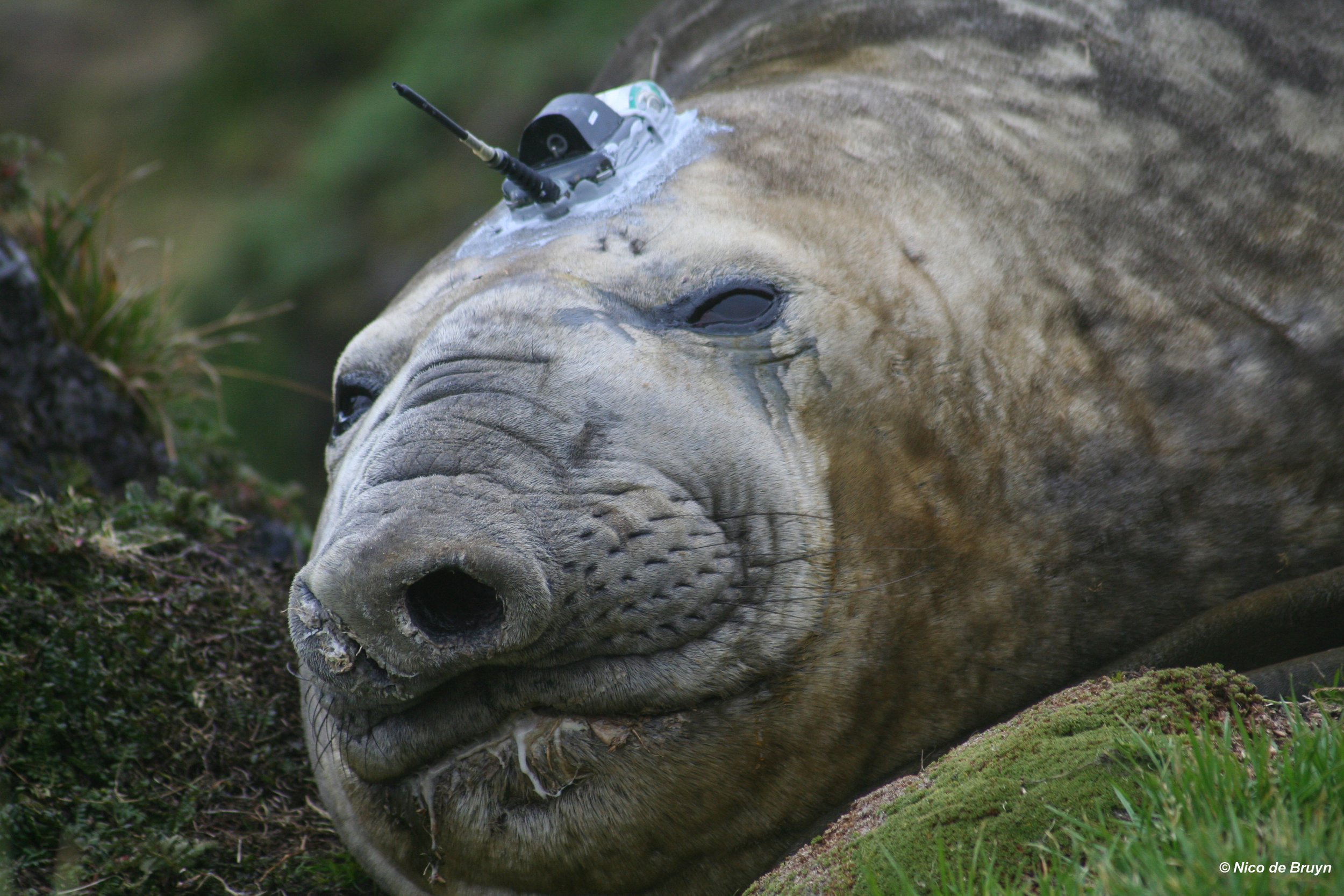Whiskers tell us what elephant seals eat.. and when!
/New paper on whisker replacement phenology and growth rate in southern elephant seals!
Lübcker N, Condit R, Beltran RS, de Bruyn PJN, Bester MN. 2016. Vibrissal growth parameters of southern elephant seals Mirounga leonina: obtaining fine-scale, time-based stable isotope data. Marine Ecology Progress Series 559: 243-255. doi: 10.3354/meps11899
Stable isotope analysis is based on the principle “you are what you eat” – in other words, the biomolecule composition of a consumer’s body tissues can give us an indication of diet over time.
A southern elephant seal's whiskers can tell us what the animal ate, and when it did so! Photo: Nico Lübcker
The nitrogen and carbon stable isotope ratios originating from the diet are chronologically deposited along the length of inert but growing keratinous tissues, such as whiskers (vibrissae), hair, and nails. Analyses of keratinous tissues provide a history of the individual’s diet. Importantly, the timing of the whisker growth rates or replacement pattern is required to link the ‘stored’ dietary data to the specific time when the actual eating occurred. We sampled whiskers from southern elephant seals (SES) at Subantarctic Marion Island to define the prevalence and timing of their whisker replacement. Secondly, we could determine their whisker regrowth rate thanks to our knowledge of the ages of the sampled animals.
Contrary to the previously described asynchronous whisker-shedding pattern of SES, 71.1% of individuals displayed whisker shedding during the annual pelage moult. Furthermore, the whisker growth ceased once the maximum length was reached, and the whiskers are retained before being replaced. The whisker growth followed a von Bertalanffy growth function as the growth rate decreased near the asymptotic length. The resolution of the isotopic data obtainable per 2 mm whisker section ranged from 3.5 days at the tip to >40 days at the base of the whisker. Using these defined growth rates and shedding patterns, researchers can prudently apply timestamps to stable isotope values captured along the whiskers of SES.
We can now more confidently assess the timing of foraging and what has been eaten while the seals are unobservable out at sea for months on end!
Written by: Nico Lübcker [nlubcker@zoology.up.ac.za], ResearchGate profile .
Nico checking on a big boy's whiskers!



















